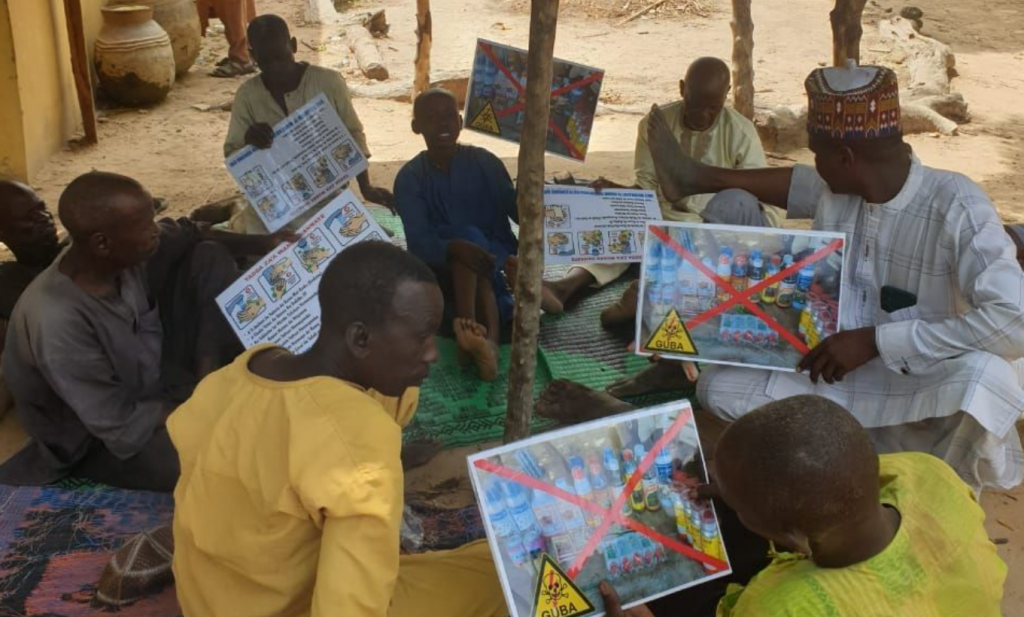One of the issues raised during the Nigeria Sustainable Agriculture Conference (NSAC) 2023 was 'Who pays for Sustainability?' This question could be addressed in several ways depending on the actors or the person asking.
The United Nations defined sustainability as meeting the needs of the present without compromising the ability of future generations to meet their own needs. So, adopting sustainable practices should translate into protecting the environment, shared prosperity for the people and economic growth of the nation. It should also address how people manage shocks and build resilience within the ecosystem, so that their future needs are also met.
However, to implement sustainable practices, all value chain actors need to have the required knowledge, technical know-how, access to appropriate infrastructure that support them throughout the process. Also, there is a need to build a framework or blueprint in the sector for stakeholders to plug in easily. Sadly, this framework is either non-existent or doesn't fit into our current reality. So, many value chain actors need to develop their own framework and system to work with from scratch (sometimes, with trial and error approach), which increases their cost of operations and discourages many of these actors.
Also, there is still very low awareness and demand for sustainably sourced products within the local markets. Farmers and other value chain actors who are committed to sustainable production and sourcing are not incentivized, and sadly bear the cost alone. As a consequence, they are unable to sustain their business operations due to high overhead costs, leading to discouragement.
Therefore, it is important for all stakeholders to know that adopting sustainable practices comes with a cost, which must be shared across the board, that is, from the farmers to the final consumers, including the government. It should be a shared responsibility amongst all the stakeholders to ensure that sustainable practices become the norm within our ecosystem. There cannot be a future without healthy people, healthy environment and shared prosperity. This can only be achieved when all stakeholders share a common goal and are committed to sustainability.
We are here today because of the commitment of the past, but what are we going to leave behind for the future generations?
Yours-in-Service
Babatunde Olarewaju
However, to implement sustainable practices, all value chain actors need to have the required knowledge, technical know-how, access to appropriate infrastructure that support them throughout the process. Also, there is a need to build a framework or blueprint in the sector for stakeholders to plug in easily. Sadly, this framework is either non-existent or doesn't fit into our current reality. So, many value chain actors need to develop their own framework and system to work with from scratch (sometimes, with trial and error approach), which increases their cost of operations and discourages many of these actors.
Also, there is still very low awareness and demand for sustainably sourced products within the local markets. Farmers and other value chain actors who are committed to sustainable production and sourcing are not incentivized, and sadly bear the cost alone. As a consequence, they are unable to sustain their business operations due to high overhead costs, leading to discouragement.
Therefore, it is important for all stakeholders to know that adopting sustainable practices comes with a cost, which must be shared across the board, that is, from the farmers to the final consumers, including the government. It should be a shared responsibility amongst all the stakeholders to ensure that sustainable practices become the norm within our ecosystem. There cannot be a future without healthy people, healthy environment and shared prosperity. This can only be achieved when all stakeholders share a common goal and are committed to sustainability.
We are here today because of the commitment of the past, but what are we going to leave behind for the future generations?
Yours-in-Service
Babatunde Olarewaju
Related




Who pays for sustainable food production, indeed, a useful question. To be able to answer this question, it may be useful to identify the factors to be changed for making food production more sustainable. It helps to obtain an impression of the costs involved.
It makes a real difference if a country is whether or not self-sufficient as far food production concerns. About 30 African countries are not yet self-sufficient, while for most of them the situation is deteriorating. Their total population concerns half of the population of the continent.
A typical characteristic of a large majority of countries with deteriorating food self-sufficiency concerns (extremely) limited fertilizer use (see “From fed by the world to food security. Accelerating agricultural development in Africa”). The related negative soil nutrient balance is among the key factors for unsustainable food production. A typical example is Nigeria, the country with Africa’s largest population. Its population is much faster growing than its food production. Over the last sixty years, the population showed 373% growth, the food production only 120%. The food production expressed in cereal equivalencies per capita decreased from almost 400 kg in 1961 to 260 kg in 2021! The area of arable land seems having reached its maximum, suggesting that the decrease of forest -almost 20% over the last 30 years- is required for infrastructural- and urban development and for compensation of depleted agricultural land.
The negative soil nutrient balance goes hand in hand with increasing food import dependency. The annual cereal import has reached almost 10 million Mt, while the world market cereal prices are increasing by the Russian attack of Ukraine and the Indian rice export ban. The most effective approach for Nigeria to improve its food self-sufficiency is agricultural development. The average use of fertilizer by farmers is about 20 kg/ha, against 145 kg/ha as world average. In Nigeria the average agricultural productivity -expressed in cereal yield- increases with only 15 kg/ha/year, while this could be at least 75 kg/ha/year! The cereal yield for rain fed crop production, at present about 1,600 kg/ha, can be easily tripled, while the yield of irrigated rice can still increase with 5,000 kg/ha.
For making food production more sustainable, Nigeria should go for agricultural input- and output market development, fertilizers, improved seeds and crop protection products being the most important external inputs.